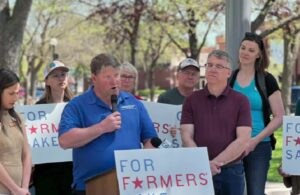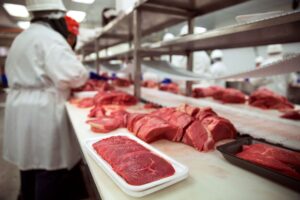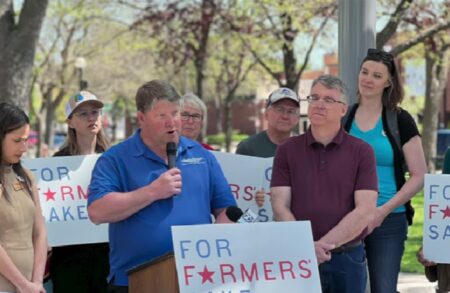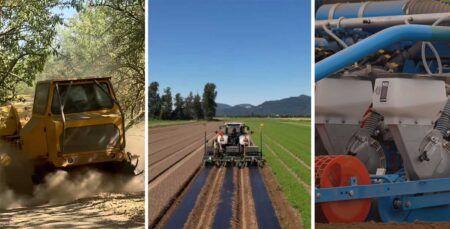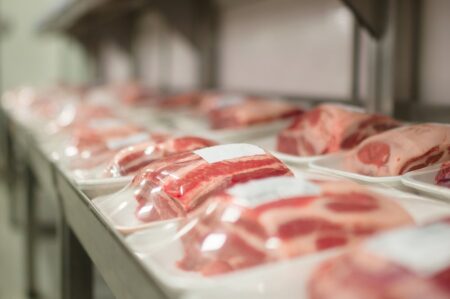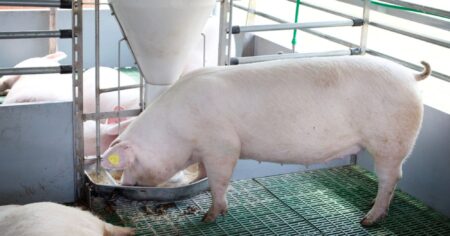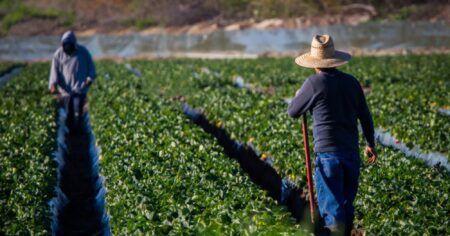Companies that reach a century of doing business are uncommon — some sources estimate only 0.5% have what it takes. In 2025, Caterpillar joins Coca-Cola, Harley Davidson, John Deere, and UPS, among others, in the century club. Currently headquartered in Irving, Texas, Caterpillar manufactures construction and mining equipment, diesel and natural gas engines, industrial gas turbines, and diesel-electric locomotives at locations around the world.
However, the global company we know today began with two California companies: Holt Manufacturing Company and the C.L. Best Tractor Company.
Holt Manufacturing Co.
The Holt Bros. Co. was incorporated on Jan. 7, 1892, in San Francisco, to sell lumber and iron. Four days later, papers were filed to incorporate the Holt Manufacturing Company with three Holt brothers (Charles, Benjamin, and Frank), G.H. Cowie, and G.L. Dickenson listed as directors.
A subsidiary business — the Stockton Wheel Co. — was created in Stockton, California, to build wheels for Holt Bros. During its first year, Stockton Wheel Co. produced 6,000 wagon wheels and 5,000 carriage bodies.
Caterpillar
Benjamin and Charles eventually bought out their brother. Charles focused on the business operations and Benjamin took on manufacturing. In the late 1800s and early 1900s, steam-powered farm machinery was rapidly replacing horse-drawn equipment, and the Holts capitalized on that trend by converting horse-drawn combines to run on steam. By the early 20th century, Holt Manufacturing Co. was the leading manufacturer of combine harvesters in the U.S., and the leading California-based manufacturer of steam traction engines.
Tracks Become a Reality
Benjamin saw a need for technological advancements in farm machinery, and pushed the Holt Manufacturing Co. into the farm equipment business. He produced a horse-drawn “Link-Belt Combined Harvester” in 1883, which allowed cutting and threshing grain to be completed in a single mechanical operation. This increased farmers’ productivity and cut labor nearly in half.
The company’s first combine harvester came to market in 1886 and had a 14-foot cutting bar and required 18 horses to pull. The largest combine it would go on to manufacture had a 50-foot-long cutting bar and took a team of 40 horses! For comparison, the widest combine heads available today are around 60 feet, with the average farmer using around a 40-foot head.
As steam power became more popular, Holt experimented with a steam tractor he called “Old Betsy.” It was 24 feet long, developed 60 horsepower from a single-cylinder engine, and could burn wood, coal, or oil. When filled with 675 gallons of water, the machine weighed 48,000 pounds. While farmers and loggers loved these tractors for their relative efficiency, their weight became a problem in the soft earth around Stockton, where they were manufactured.
To combat sinking into the ground, Holt tried to expand the size and width of the wheels, but that proved complex and difficult to maintain. He ended up developing a workable track-laying system, replacing the wheels on a 40-hp Holt steamer No. 77 with a set of wooden tracks bolted to chains. He successfully tested the new design on Thanksgiving Day 1904.
One report of the event has photographer Charles Clements viewing the image of the tracks rolling through the field and claiming they looked like a caterpillar. The name stuck and Holt began producing tracked tractors under the Caterpillar name, which he trademarked in 1911. His first production model had a dual-track frame 30 inches high by 42 inches wide by 9 feet long and sold for $5,500. Over the next decade, more than 2,000 Caterpillar crawlers were sold in more than 20 countries.
With a desire to grow his agricultural business, Holt began looking to the Midwest. A recently-built factory in East Peoria, Illinois, was available and purchased by Holt’s company in 1909. The Holt Caterpillar Company was incorporated on Jan. 12, 1910, in California and Illinois, and tractors began production in both states. By 1912, the Illinois facility employed 625 people and had exported tractors across North and South America.
C.L. Best Tractor Co.
Clarence (C.L.) Best began working for his father’s company, Best Manufacturing Co., in Stockton, California, until it was bought out by Holt Manufacturing Co. in 1908 in an effort to resolve a patent infringement lawsuit. In 1910, Best formed his own company — named after himself — the C.L. Best Traction Company (later renamed the C.L. Best Tractor Co.).
Best designed a track-style tractor in the early 1910s. His “Tracklayer” design was nearly an exact copy of Holt’s crawler and had a conventional wheel on the front, used to setter, and crawling wheels on the back.
His most popular tractor was a 60-hp crawler produced beginning in 1919 called the C.L. Best 60 Tracklayer. It was powered by a 4-cylinder, overhead valve gasoline engine with 60 hp at the belt and 35 hp at the drawbar. It weighed 20,500 pounds. Following the merger between Holt and Best’s companies in 1925, creating Caterpillar, the tractor was renamed the Caterpillar Sixty, and during its 12 years of production 18,938 units were produced.
The World at War
World War I changed the U.S. manufacturing landscape as many factories transitioned to supply machinery for the military. Holt tractors were widely used as artillery tractors during the war, and his experience working with the government led him to plan an expansion to meet the needs of the armed forces.
Best’s company did not supply tractors for the war effort, instead focusing on providing smaller tractors for farmers with assurance from the government that they would be able to obtain the needed steel during the war to continue to make agricultural machines. This approach gave Best an advantage in the agricultural market over Holt when the war ended.
Caterpillar
Both companies faced challenges in transitioning out of wartime production, and in 1925, both facing financial difficulties, the companies merged and became the Caterpillar Tractor Co. Under terms of the merger, the new company’s headquarters were moved from California to Peoria, Illinois, in 1930.
The Caterpillar company offered just five track-type tractors at first: The 2-ton, 5-ton, and 10-ton from Holt’s product line and the Caterpillar 30 and Caterpillar 60 from Best’s line. The first completely new tractor produced by the new company was the 1929 Caterpillar L20.
And the rest, one could say, is history.


